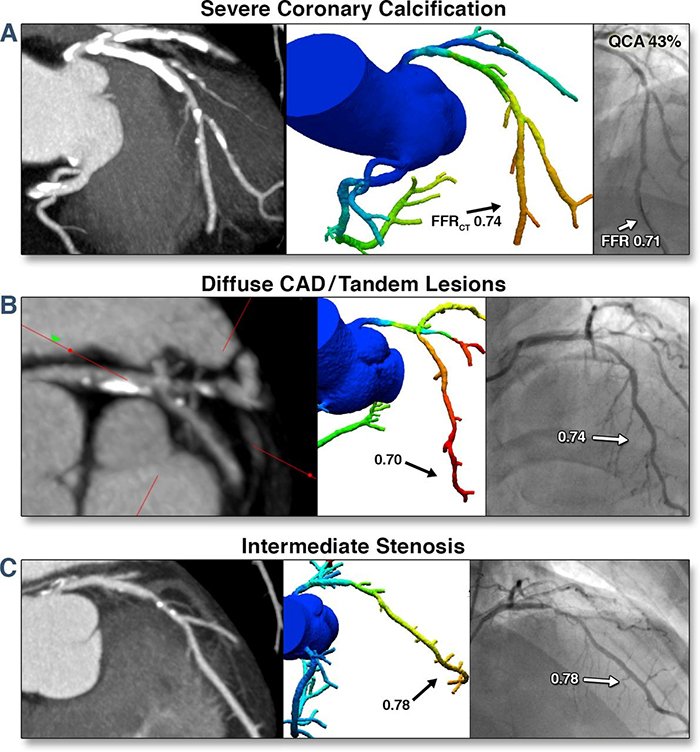What is causing my chest pain?
Written by John Steuter, MD
Evaluating patients for coronary artery disease (CAD) is a common clinical scenario that providers face on a daily basis. A variety of tests exist that can be utilized to sort through the multitude of such patients from stress tests to heart catheterization. Tests can be categorized into either being functional assessments for significant CAD such as treadmill stress tests, nuclear stress tests or into anatomic, as in heart catheterization or cardiac CT. Each modality has strengths and limitations.
Fractional flow reserve (FFR) measurement involves determining the ratio between the maximum achievable blood flow in a diseased coronary artery and the theoretical maximum flow in a normal coronary artery.
Normal: FFR of 1.0 is widely accepted as normal.
Concerning: FFR lower than 0.80 is generally considered to be associated with myocardial ischemia and a significant degree of CAD.
FFR was developed and initially only used during heart catheterization.
 Recent advances in CT have contributed towards improving coronary computed tomography angiography (CCTA) in determining the severity of coronary artery disease anatomically. The viability of CCTA has most often been confined to anatomical assessment until the recent development that has enabled evaluation of the hemodynamic significance of coronary artery disease. CCTA-derived fractional flow reserve (FFRCT) is a novel imaging modality that now permits the physiological assessment of coronary artery disease. This enables a provider to get an anatomic and functional evaluation of a patient for CAD.
Recent advances in CT have contributed towards improving coronary computed tomography angiography (CCTA) in determining the severity of coronary artery disease anatomically. The viability of CCTA has most often been confined to anatomical assessment until the recent development that has enabled evaluation of the hemodynamic significance of coronary artery disease. CCTA-derived fractional flow reserve (FFRCT) is a novel imaging modality that now permits the physiological assessment of coronary artery disease. This enables a provider to get an anatomic and functional evaluation of a patient for CAD.

At Bryan Heart, we are proud to be the only institution in the state to offer CT-FFR. If you have questions about CAD, CT-FFR or to refer a patient, call 402-483-3333.

